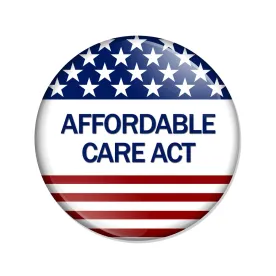This nation’s latest effort to lower the rate of uninsured health care recipients and improve health outcomes was launched with President Obama’s approval in 2010 of the Patient Protection and Affordable Care Act (ACA or Obamacare). The new law has led to the biggest restructuring in the delivery of health care since President Lyndon Johnson signed legislation creating Medicare and Medicaid in 1965.
Upon passage, the Affordable Care Act became the focus of one of the most contentious political battles between Congressional Republicans and Democrats in recent memory. For Congressional Republicans, the new law provided campaign fodder for their successful effort in 2010 to regain the majority in the U.S. House. Since then, Republican members of Congress have attempted to repeal the ACA more than sixty times.
ACA- National Overview
Most health care analysts believe the ACA has had a positive impact on the availability and delivery of health care in the U.S. Nationally, 20 million adults have become insured under the ACA, an additional 3 million children have been added to the Children’s Health Insurance Program and the ACA’s expanded Medicaid program has enrolled over 15.7 million new individuals bringing Medicaid’s total to more than 70 million Americans. As a result, the U.S. uninsured rate has fallen from 15.7% prior to the ACA to a low of 8.6% in 2016.
ACA- Connecticut Overview
Connecticut, through state legislation (PA 11-53), became one of the first states to create a state-run health insurance exchange under the ACA. Currently, two insurance carriers, ConnectiCare and Anthem, provide qualified health plans to over 110,000 individuals in Connecticut. Additionally, Connecticut became the first state to expand Medicaid under provisions of the ACA, adding 200,000 people to the program’s rolls. Currently, more than 750,000 Connecticut residents are covered by Medicaid. The rate of uninsured has fallen from 8% in 2011 to 3.8% today.
Trump and the ACA
On January 11, President-elect Donald Trump renewed his call for the “repeal and simultaneously replacement” of Obamacare. Trump contends the ACA has led to higher insurance premiums, promoted the rationing of health care and fostered a less competitive marketplace for the insured. Trump vowed to move forward with a new national health care plan as soon as his nominee for Health and Human Service Secretary Representative Tom Price is confirmed by the U.S. Senate. Trump encouraged the Republican controlled Congress to move quickly on repeal and Vice President-elect Mike Pence has told lawmakers that Trump plans to issue a series of executive orders relating to Obamacare repeal shortly after taking office.
Reconciliation and the ACA
On January 12, the U.S. Senate took the first step to repeal the ACA by voting to create a reconciliation bill which seeks to delete certain budgetary provisions in the health care law. These provisions include eliminating the expansion of Medicaid in participating states (including Connecticut), repealing premium subsidies for those insured through qualified health plans, removing both individual and employer mandates and eliminating tax penalties for individuals who choose to not obtain health insurance coverage. Using the reconciliation process allows the Senate to skirt the 60 vote cloture rule that previously tied up repeal provisions in that chamber. Not changed by this reconciliation bill will be current law prohibiting denial of coverage due to pre-existing conditions, parental insurance coverage for dependents until age 26, the ban on rate setting by health status and the mandate that certain essential health benefits be offered in qualified health insurance policies. On January 13, the Republican-controlled U.S. House followed the Senate actions with its own vote to begin the repeal process in that chamber. With those votes, House and Senate committees will now begin the formal process of unwinding provisions in the existing law and drafting a replacement for significant portions of the ACA.
Connecticut and the Future of the ACA
For Connecticut, the future of health care services under a revised or repealed ACA is the great unknown. Governor Dannel Malloy has expended considerable resources in an attempt to achieve a health care system that is inclusive, cost effective and forward thinking. Under the direction of Lieutenant Governor Nancy Wyman, the Governor’s Health Care Cabinet has surveyed the state’s health care delivery system, debated gaps in coverage and made a series of recommendations to promote value-based health care, sought the reduction of health care barriers and advocated provisions for greater health care access for the underserved. Much of this effort has been incorporated in the activities of the state’s health insurance exchange and through the expansion of Medicaid under the ACA.
With the election of Trump and the likely confirmation of Health and Human Services Secretary Tom Price, the most likely reform scenarios to emerge will be new market-based insurance programs supported by tax credits, flexible health care savings accounts and a shift to state block-granting or per capita spending for the allocation of Medicaid funds. Such proposals could upend six years of progress Connecticut has made under the ACA.
Block granting, in a major way, was last tried during the Reagan administration. Called “New Federalism,” the president attempted to consolidate 88 categorical federal programs into seven new block grants with an overall funding cut of 25%. He argued that states and local governments would have greater flexibility and spending decision would be dictated by the states, not the federal government. Reagan was only partially successful in convincing Congress to combine categorical grants. Congress made substantial changes to his proposals, reestablished certain spending requirements and rejected the inclusion of numerous programs into the block grant program.
Connecticut could very well see this shift to block granting federal Medicaid aid or a system that offers a lower rate of per capita spending for Medicaid recipients. Such scenarios would be chaotic for the state’s current health care delivery system. Health care providers would be pitted against each other for a share of the budgetary pie. Recipients would have fewer choices for care and state government would become the ultimate arbiter on Medicaid expenditures, potentially ratcheting back eligibility limits and rationing certain medical services. For the state, that would be like untangling a cat’s cradle of health care delivery policies.




 />i
/>i

